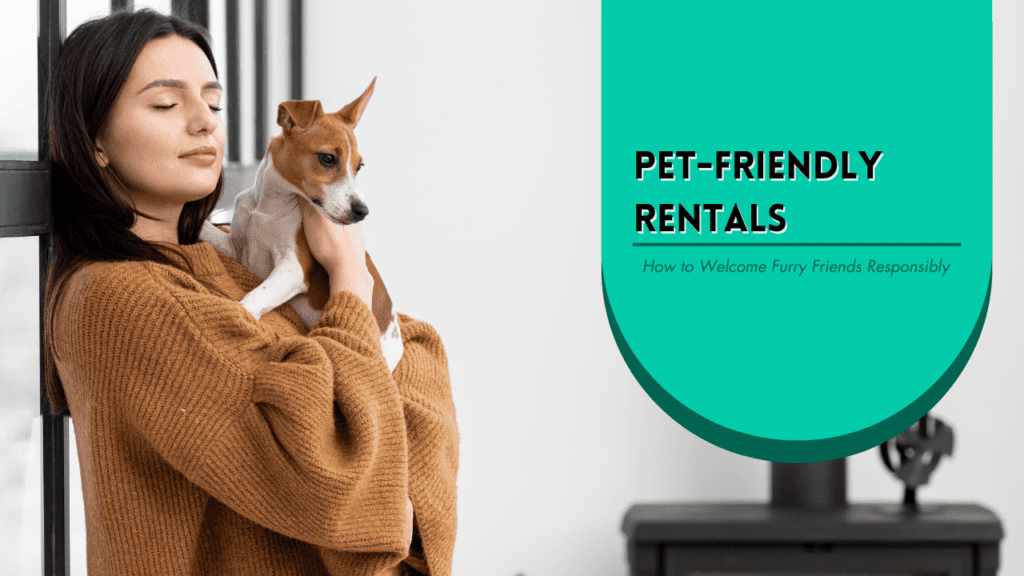
By now, it’s not uncommon to see dogs accompanying people into coffee shops or waiting for crumbs to fall from a table outside at your favorite lunch spots. Pets are almost people, too, not only because they bring their owners so much comfort and joy, but also because their population is growing. Statistics tell us that 66 percent of American households include at least one pet, and according to the Pew Research Center, 97 percent of those pet owners think of their furry friend as a family member.
You’ll need to welcome those pets into your LA rental property.
If you’re worried about the risk and liability that comes with allowing dogs and cats into your rental home, we do understand. They can scratch up the floors. They can leave behind less-than-pleasant odors. They can bite a neighbor.
But, the numbers don’t lie. Most of the tenant pool will have at least one pet, and you don’t want to leave your property vacant, waiting for that non-pet owner to finally come along and agree to rent it.
There are a number of excellent reasons to ensure you have a pet-friendly rental property in LA. Let’s talk about how to protect your investment property while keeping it accessible to your best tenants and their perfect pooches and kitty cats.
The Benefits of a Pet-Friendly Rental Home in Los Angeles
You do want to allow pets into your property because of the value it provides to your investment and the boost it gives to what you earn on that investment. Here are some of the best reasons not to avoid pets as a landlord or property owner:
- Increased Demand. Pet-friendly rentals are in high demand, as many tenants struggle to find suitable housing for their furry family members. When you market your home in a way that suggests you’re willing to consider pets, you can be sure you’ll generate a lot more interest.
- Higher Rent Potential. You may be able to charge a premium rent for accommodating pets, especially through pet rent, which has become normalized over the years. Your pet owning tenants will expect to pay between $25 and $50 per pet in extra rent every month.
- Longer Tenancy Durations. Pet owners often stay longer in rentals that accommodate their animals, reducing tenant turnover. This saves you money on vacancy and turnover costs.
- Pet Owners are Good Tenants. In our experience as Los Angeles property managers, we can tell you that people are far more likely to damage a home than pets. When you carefully screen your pets and their owners, you can be sure you’re getting some generally good tenants who want to take care of your property.
Not allowing pets leaves you earning less and potentially looking at a longer vacancy. With a responsible pet policy in place, you can protect and maintain your investment property even while pets are living there.
Strategies for Property Maintenance and Protection
You need some strategies to help protect your investment. Here’s what you can do:
- Create a Clear Pet Policy
Your lease should include a pet addendum that outlines the specific terms and conditions related to pet ownership. This might include:
- Type and size of pets allowed. You can place any restrictions you want on the types of pets – maybe only cats! You can also require them to be under a certain weight.
- Number of pets allowed. Maybe you’ll allow one dog or one dog and one cat or two pets total – it’s up to you.
- Pet deposit or pet rent requirements. Always have some kind of financial gain so you can protect yourself against any extra cleaning or repairs that might be needed.
- Rules regarding noise and waste management. Maybe you want pets to always be on leashes outdoors, for example.
If you’re renting out a property that’s in an HOA or a condo association, there are likely to be additional pet policies and requirements that need to be followed. Make sure your tenants have a copy of these and agree to them.
- Charging a Pet Deposit or Pet Fee
As we mentioned, you want to cover yourself financially, and that’s why it’s so important to collect a pet fee or a pet deposit. There are two schools of thought on this. A refundable pet deposit could incentivize your tenants to ensure there is no pet damage at all during the tenancy, since they’ll have an opportunity to get that pet deposit back. But, a non-refundable pet fee can also make sense because then you get to keep the money, whether there’s pet damage or not. Decide what’s most important to you. It’s also important to remember that the security deposit limit is being reduced to the equivalent of one month’s rent in July, 2024. That may limit how much of a pet deposit you can collect.
- Invest in Durable Materials to Protect Against Pet Damage
When you’re making repairs or renovations to your investment property, consider using pet-resistant materials, such as scratch-resistant flooring, stain-resistant or washable paint for walls, and metal or hardwood baseboards instead of softwood. If you have a yard, you’ll want to make sure the outdoor space is pet-friendly. Install secure fencing; this will raise your rental value and make your property especially attractive to dog owners. You’ll also want plants and shrubs that can endure dog noses or cat curiosities.
Communicate Clearly with Tenants about Pet Expectations
Make sure tenants understand their role in keeping the property clean and well-maintained. Clear communication can prevent misunderstandings and encourage tenants to be vigilant. Welcoming pets into your rental property can set you apart from the competition and bring joy to your tenants. When they know that you expect them to be responsible pet owners, they are almost always willing to prove to you that they are.
 We work with pet-friendly properties in Los Angeles quite a bit, and we’d be happy to talk with you about the logistics of a pet policy and how to screen tenants and their pets. Please contact us at Earnest Homes.
We work with pet-friendly properties in Los Angeles quite a bit, and we’d be happy to talk with you about the logistics of a pet policy and how to screen tenants and their pets. Please contact us at Earnest Homes.
